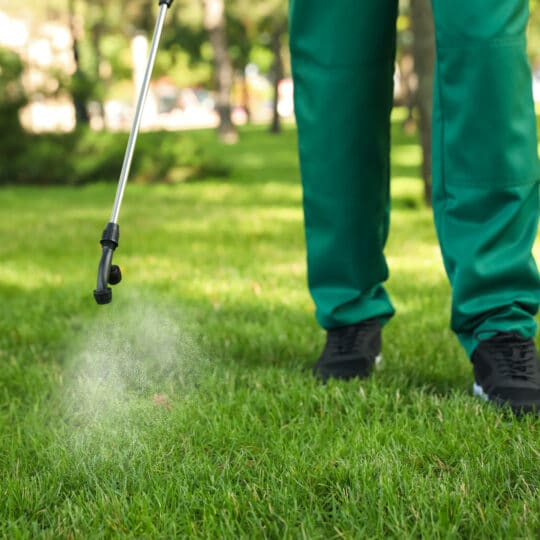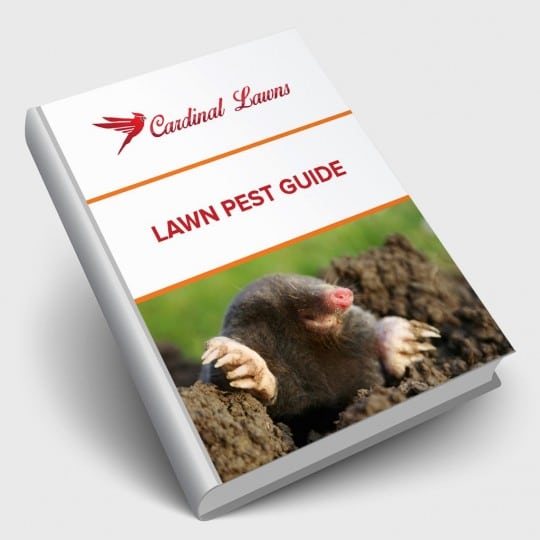Common Fall Lawn Pests
And How to Control Them
Posted
November 5, 2020

Leaves may not be the only thing attacking your lawn this season. Even if you can’t see them yet, there could be any of the following common fall lawn pests getting cozy for the winter.
Common Fall Lawn Pests
While signs of the following pests may not show up until spring or summer, it’s good to learn about them now and prepare yourself and your yard. If your grass was looking a little rough recently—brown spots, dead patches of grass, visible insects—pay attention to the life cycles and signs and then treat accordingly.
Grubs. Beetle larvae love to feast on grass roots from spring to early fall. Then these white, plump, c-shaped pests settle deeper in the soil to spend the winter. Adult beetles mate in the summer, and the females lay eggs in the soil where new grubs begin feeding. First, grass blades look wilted, and eventually patches of brown turf spread across your lawn. In the spring and summer, the sponge-like patches easily lift to reveal the grubs underneath. Another sign of grubs is an increase of other visitors—like birds and moles—feeding on your lawn. While a few grubs shouldn’t do too much damage, use a grub control product if the problem escalates.
Chinch bug. While these sap-sucking insects feed on grass, they also secrete an anticoagulant that causes grass to repel water and eventually wither and die. They’re most active from summer to fall and will also overwinter at the base of grass stems. The first sign of a problem is when the grass turns purplish, wilts to yellow, and then turns brown.
Sod webworm. Young sod webworms mature to a brown or green color with dark spotting and about an inch long body. It transforms into a grayish adult moth that lays eggs on grass blades at night. Webworm larvae feed at night and hide during the day in silken burrows they create in the grass. They eat the grass blades and stems, leaving brown patches behind.
Armyworm. These one- to two-inch-long pests vary in color—from gray to yellow to pink—and eventually, turn into brown moths. The worms eat grass blades and stems, and they skeletonize leaves on other plants. They don’t prefer the sun or heat, so they feed on your lawn at night or early morning and create circular bare spots in their wake.
Cutworm. These worms are about two inches long, gray/brown, and striped. Then they transform into gray moths with brown or black markings. Adult cutworm moths lay eggs in the spring on the tips of grass blades. The eggs hatch into worms, which feed at night before becoming moths. This cycle repeats multiple times a year—more in regions with mild winters. Cutworms create underground burrows where they hide during the day. They emerge at night to bite grass stems, leading to dead spots in the yard.
Lawn Pest Control
There are certain insecticides available for treating lawn pests. However, it’s best to determine what pest you’re dealing with before you start a treatment plan. Granulated products help target areas without harming other plants. Products also come in liquid form to be sprayed for continuing protection.
Contact Cardinal Lawns to help determine what pest and product you should focus on to beautify your outdoor space.

Download Your FREE Lawn Pest Guide
Pests become most prevalent during the heat and humidity of summer. Take some time to learn about the signs of infestations before any damage can be caused to your landscape. This handy guide will teach you how to spot common lawn pests and how to keep them from causing harm to you and your property.